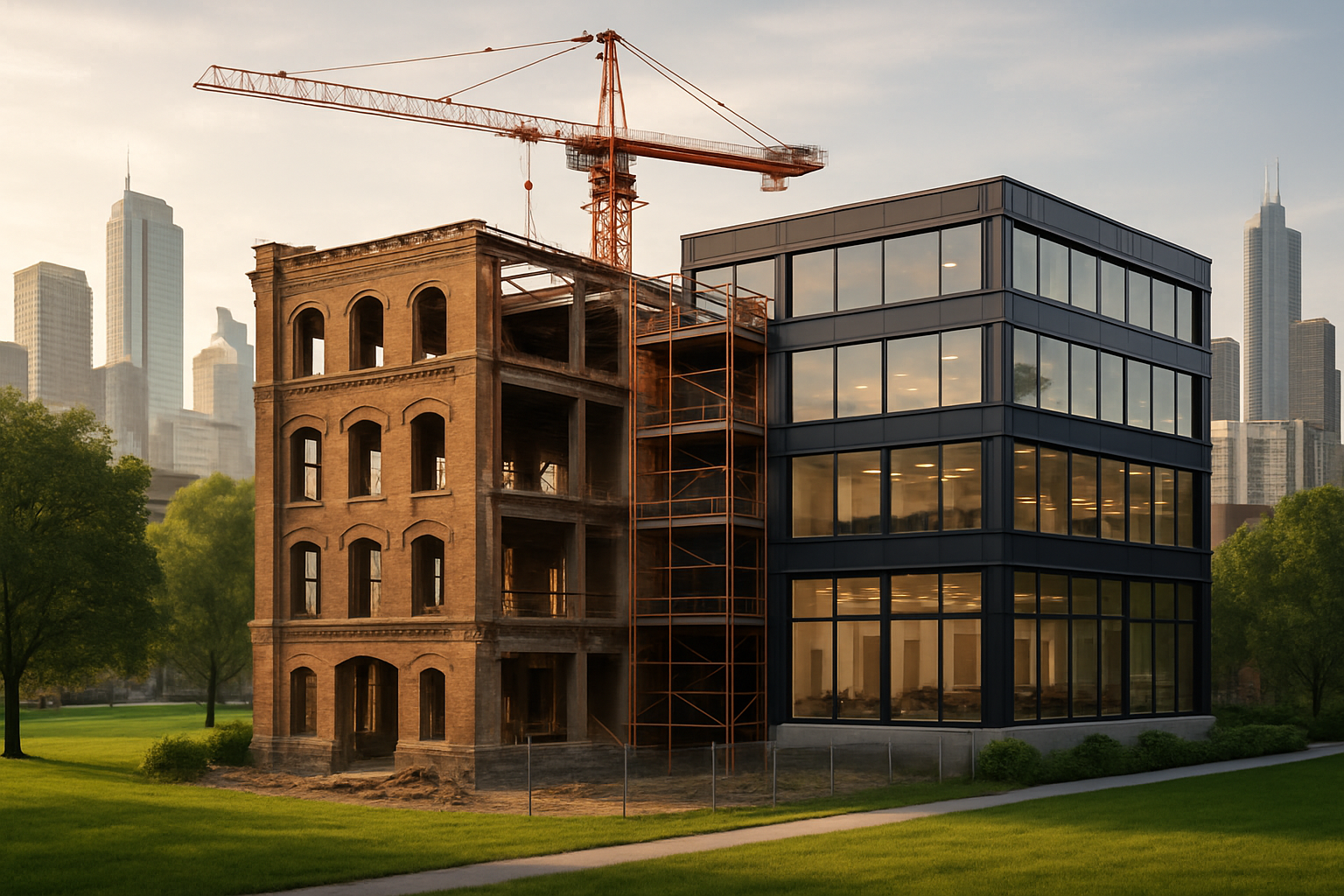Unlocking Hidden Value: The Rise of Adaptive Reuse in Real Estate
In an era of urban redevelopment and sustainability, adaptive reuse has emerged as a transformative strategy in real estate. This innovative approach breathes new life into neglected structures, turning obsolete buildings into vibrant spaces that meet modern needs. With 7% of commercial real estate in major U.S. cities sitting vacant, adaptive reuse offers a compelling solution to urban decay while presenting unique investment opportunities.

Historical Context and Evolution
The roots of adaptive reuse can be traced back to the 1960s and 1970s when preservationists began advocating for the conservation of historic buildings. Initially, these efforts focused primarily on landmarks and architecturally significant structures. However, as urban populations grew and available land became scarce, developers and city planners started recognizing the potential in revitalizing a broader range of buildings.
The 1990s saw a surge in adaptive reuse projects, particularly in post-industrial cities where abandoned warehouses and factories presented prime opportunities for redevelopment. This trend has only accelerated in the 21st century, driven by factors such as sustainability concerns, changing demographics, and the need for affordable housing solutions.
Economic and Environmental Benefits
Adaptive reuse offers a host of economic advantages. Repurposing existing structures often costs less than new construction, with savings of up to 16% reported in some cases. These projects can also qualify for various tax incentives and historic preservation grants, further enhancing their financial viability.
From an environmental perspective, adaptive reuse is a sustainable alternative to demolition and new construction. It reduces landfill waste, conserves energy, and minimizes the carbon footprint associated with producing and transporting new building materials. Studies have shown that reusing an existing building can be up to 40% more environmentally friendly than constructing a new one of similar size and functionality.
Market Trends and Investment Opportunities
The adaptive reuse market is experiencing robust growth, with a projected CAGR of 7.2% from 2021 to 2028. This trend is particularly evident in urban cores where land scarcity and high property values make new construction challenging. Investors are increasingly recognizing the potential in underutilized assets, leading to a surge in adaptive reuse projects across various property types.
One notable trend is the conversion of office buildings into residential spaces, a shift accelerated by the COVID-19 pandemic and the rise of remote work. In cities like New York and Chicago, developers are transforming outdated office towers into modern apartments, capitalizing on the growing demand for urban living spaces.
Challenges and Considerations
While adaptive reuse offers numerous benefits, it also presents unique challenges. Retrofitting old buildings to meet current building codes and accessibility standards can be complex and costly. Unforeseen structural issues, hazardous materials, and outdated systems often lead to budget overruns and project delays.
Zoning restrictions can also pose obstacles, particularly when changing a building’s use from commercial to residential. Developers must navigate complex regulatory landscapes and often engage in lengthy approval processes with local authorities.
Case Studies: Success Stories in Adaptive Reuse
Examining successful adaptive reuse projects provides valuable insights into the potential of this approach. The High Line in New York City stands as a prime example, transforming an abandoned elevated railway into a wildly popular urban park. This project not only revitalized a neglected infrastructure but also catalyzed billions of dollars in real estate development along its path.
In Detroit, the historic Michigan Central Station, once a symbol of urban decay, is undergoing a $740 million renovation to become a mixed-use innovation hub. This project exemplifies how adaptive reuse can serve as a catalyst for broader urban revitalization efforts.
Financing Adaptive Reuse Projects
Securing funding for adaptive reuse projects can be challenging due to their unique nature and potential risks. However, various financing options are available to developers and investors. Historic tax credits, both at the federal and state levels, can provide significant financial incentives for qualifying projects.
Additionally, some lenders specialize in adaptive reuse financing, offering tailored solutions that account for the complexities of these projects. Public-private partnerships have also emerged as a popular financing model, particularly for larger-scale redevelopments with significant community impact.
The Future of Adaptive Reuse
As cities continue to evolve and face new challenges, adaptive reuse is poised to play an increasingly important role in urban development. The growing emphasis on sustainability, coupled with the need to address housing shortages and revitalize urban cores, will likely drive further innovation in this field.
Emerging technologies, such as 3D scanning and Building Information Modeling (BIM), are making it easier to assess and plan adaptive reuse projects. These tools allow developers to create detailed digital models of existing structures, facilitating more accurate cost estimations and design planning.
A Transformative Approach to Real Estate
Adaptive reuse represents a paradigm shift in how we approach urban development and property investment. By reimagining the potential of existing structures, this strategy offers a sustainable, economically viable solution to many of the challenges facing modern cities.
For investors and developers, adaptive reuse presents unique opportunities to create value in overlooked properties. However, success in this field requires a deep understanding of local markets, regulatory environments, and the technical challenges involved in repurposing old buildings.
As we look to the future, adaptive reuse is set to become an increasingly important tool in shaping resilient, sustainable, and vibrant urban environments. By breathing new life into old structures, we can preserve our architectural heritage while meeting the evolving needs of communities and creating value for investors.





